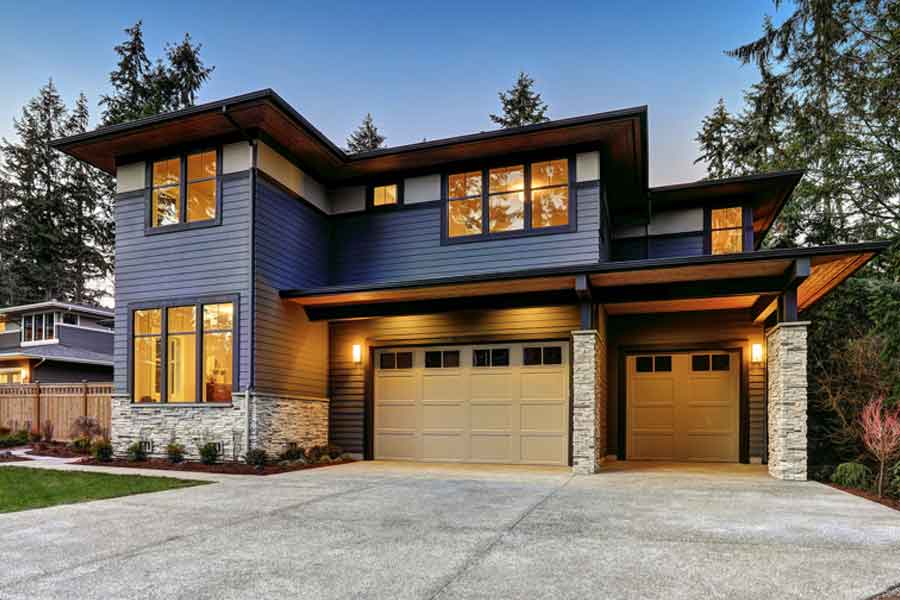What happens if your home is not air sealed properly
Home is where the heart is – but not if it’s uncomfortable being there. That’s why it’s important for homeowners to ensure their house is properly sealed. This means having a fully functional building envelope to combat any potential leaks from the inside or outside. A home’s envelope is made up of the foundations, roof, doors, windows and exterior walls. Things that can impact the envelope include but are not limited to ventilation, electrical systems, heating/cooling, plumbing and the activities that occupants of the home are doing. Everything in your home must work together with the building envelope to ensure it functions properly. Just like a car, your home’s building envelope should be inspected and maintained on a regular basis to ensure that everything is sealed. In this article we will dive into what happens if your home isn’t sealed and ways to look for any problems.
Moisture intrusion
One of the most obvious signs your home is not sealed properly is if there is water or moisture inside your home. Catching water problems on the outside of your home before they get inside will help you avoid extremely costly repairs. Your home’s building envelope works to keep out moisture and vapors from the outside which without this would enter your home through the power of gravity and winds. There is a problem if you notice water running down the sides of your home instead of flowing from drain pipes and eaves, if water is pooling on your roof, if you see mold and/or fungi on your home, rotting wood, peeled paint, musty smells, cracked caulking, the sound of water dripping and water stains on the walls, ceilings or foundation. Something to also be aware of is moisture being trapped within your walls which will cause decay overtime. Maintaining your roofing and routinely checking your foundation, walls and areas around doors and windows is a good idea.
Air leaks
Having a properly sealed home means having healthy air quality and comfort. A building with proper air flow will minimize the chances of condensation entering your home as well as any unwanted air leaks which would result in damage to your wall structures. Air quality and moisture are linked together as an air leak is one of the leading causes for moisture intrusion. When this occurs, it invites harmful mold and fungi into your home while negatively affecting your home’s structural integrity. Air leaks will also negatively affect your bills. This is because your air conditioning and heating systems are having to work harder than usual to maintain the desired temperature of your home when air leaks are prevalent. On average, air leaks will increase energy costs by 10 to 30 per cent so always seal a leak when you find one. Leaks can occur for a variety of reasons but usually a homeowner will find one near openings in the house like windows or doors. Fixing a small air leak when you find it will help prevent higher energy bills and will improve the lifespan of your HVAC.
Unwanted visitors
If your home is not properly sealed, it leaves an opportunity for rodents and insects to find their way in. This can occur if there are cracks in your foundation, holes in your roof, openings in your ventilation, air leaks near your doors or windows, openings around your pipes and more. Depending on where you live, rats and mice could be some of the most common unwanted house guests. All it takes for some rodents is a crack no bigger than one-fourth of an inch, similar to the width of a pencil! And, it’s even easier for smaller pests like spiders, ants and other insects to enter.
Aesthetic problems
In addition to unwanted moisture infiltration, higher energy bills and risks of house pests, a wide array of aesthetic problems can result from homes that aren’t sealed. This includes but is not limited to warping, delamination, discolouration and deterioration of glass, plywood and other surfaces.
What causes a home’s building envelope to fail?
At the time of construction, the building envelope could fail due to design problems. If the building has a defect that results in a poor air barrier, your home is not sealed.
Hiring under qualified workers. If someone on a crew doesn’t have the necessary skills and knowledge to ensure a building envelope succeeds, it increases the chances of something going wrong.
Material wear and tear. Like we already mentioned, your home must be maintained and regularly inspected because nothing will work to its full potential forever. Everything has a recommended lifespan so keeping a paper trail is always a good idea.
Harsh weather conditions can negatively affect your home’s building envelope. Things like heavy rain storms, snowfall, humidity, freezing temperatures, scorching temperatures and extreme winds can all impact your home.
Conclusion
Owning a home isn’t always easy, especially when it comes to maintenance. If you’re currently in the stages of building your home, ensure you’ve hired professionals who conduct inspections each day. The best line of defense is ensuring your home is sealed properly during the early stages and throughout the construction process. If your home is already built or it’s an older home which is more prone to envelope problems, make sure you consult with a professional on ways to check for problems. And remember, if you’ve found a leak in your home, repairing it as quickly as possible will help ensure the problem doesn’t become worse. Inspecting areas of your home like the roof and surrounding gutters and drains, roof flashing, areas around windows and doors, joints and floor surfaces is a good idea each year.

